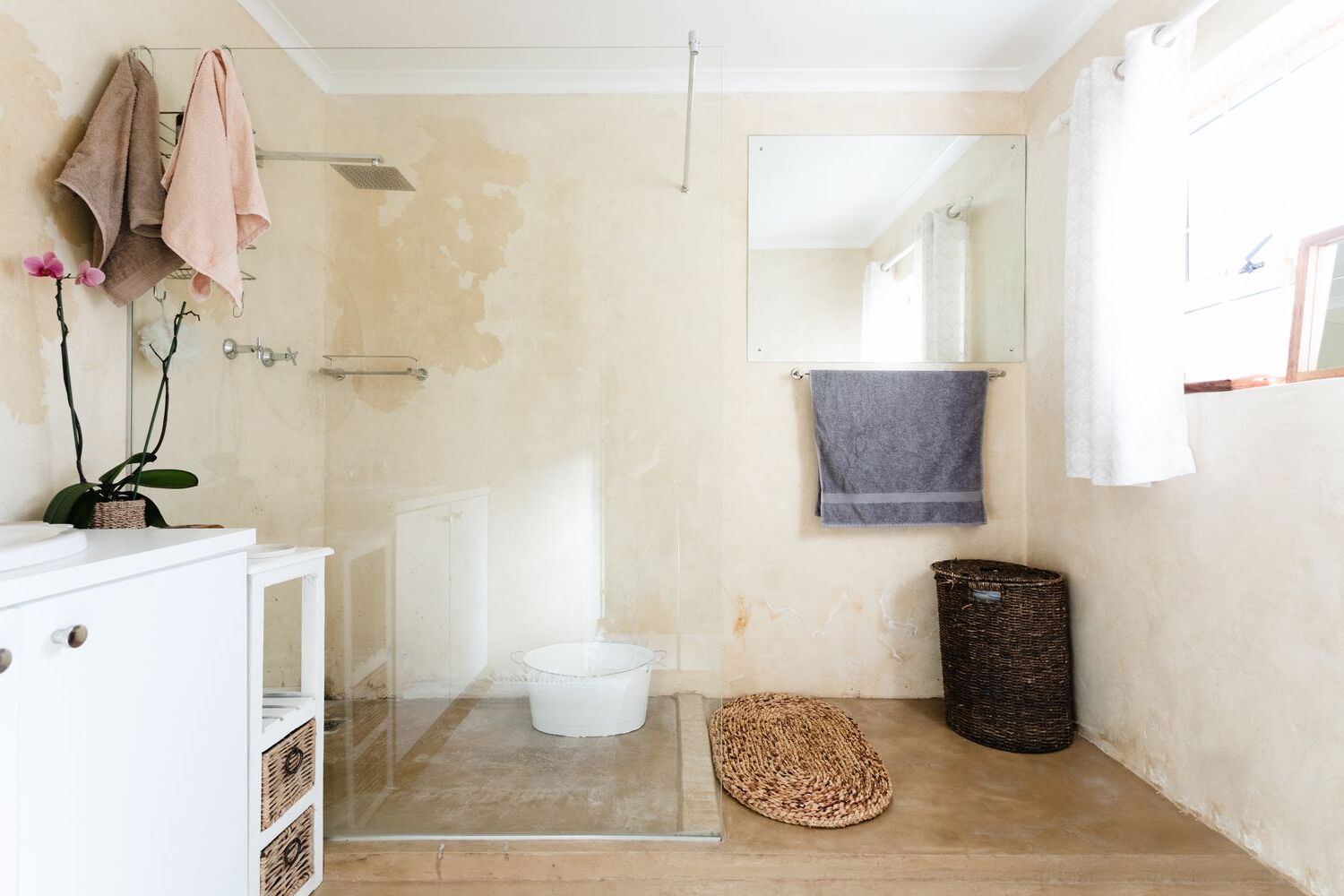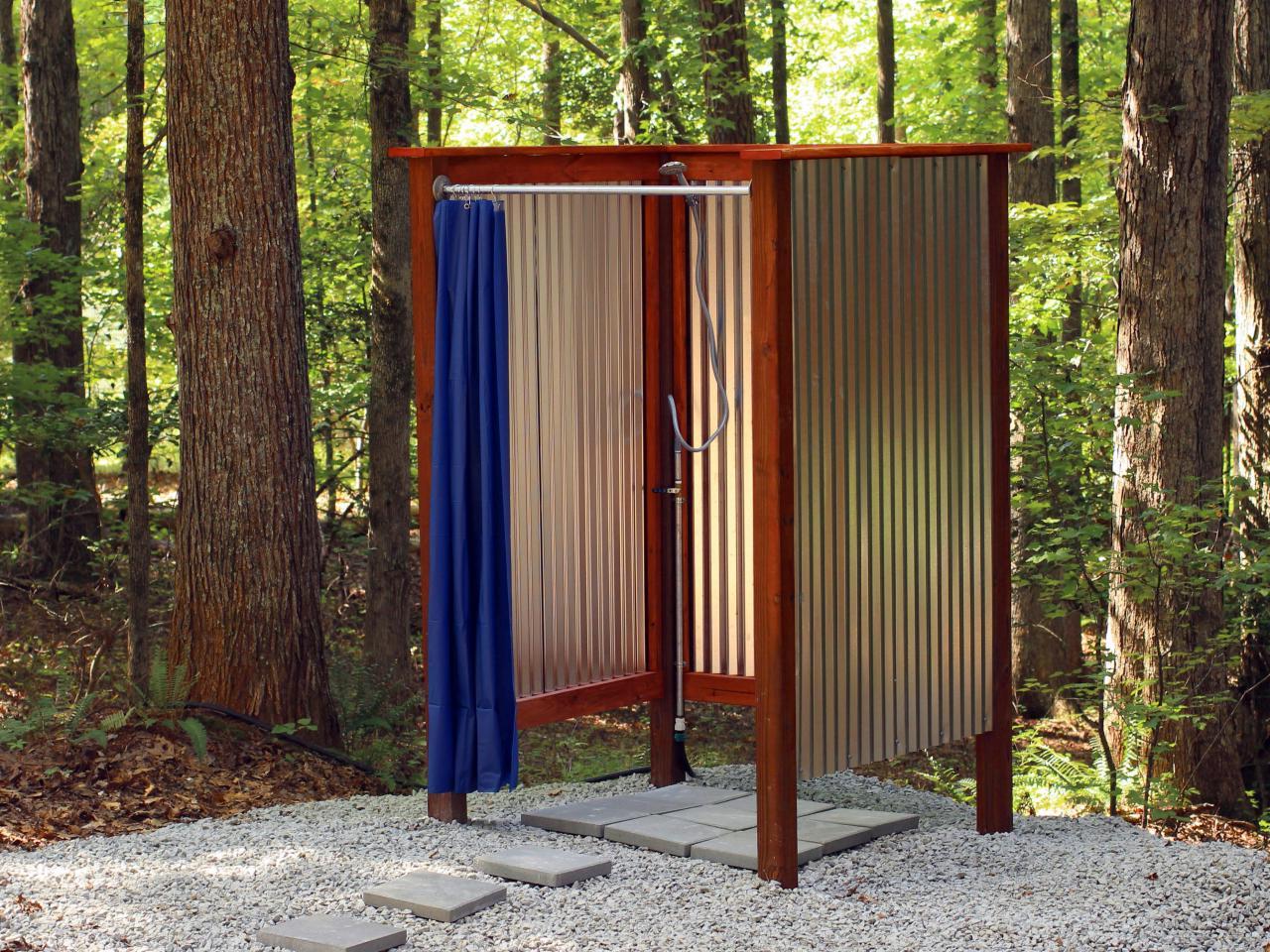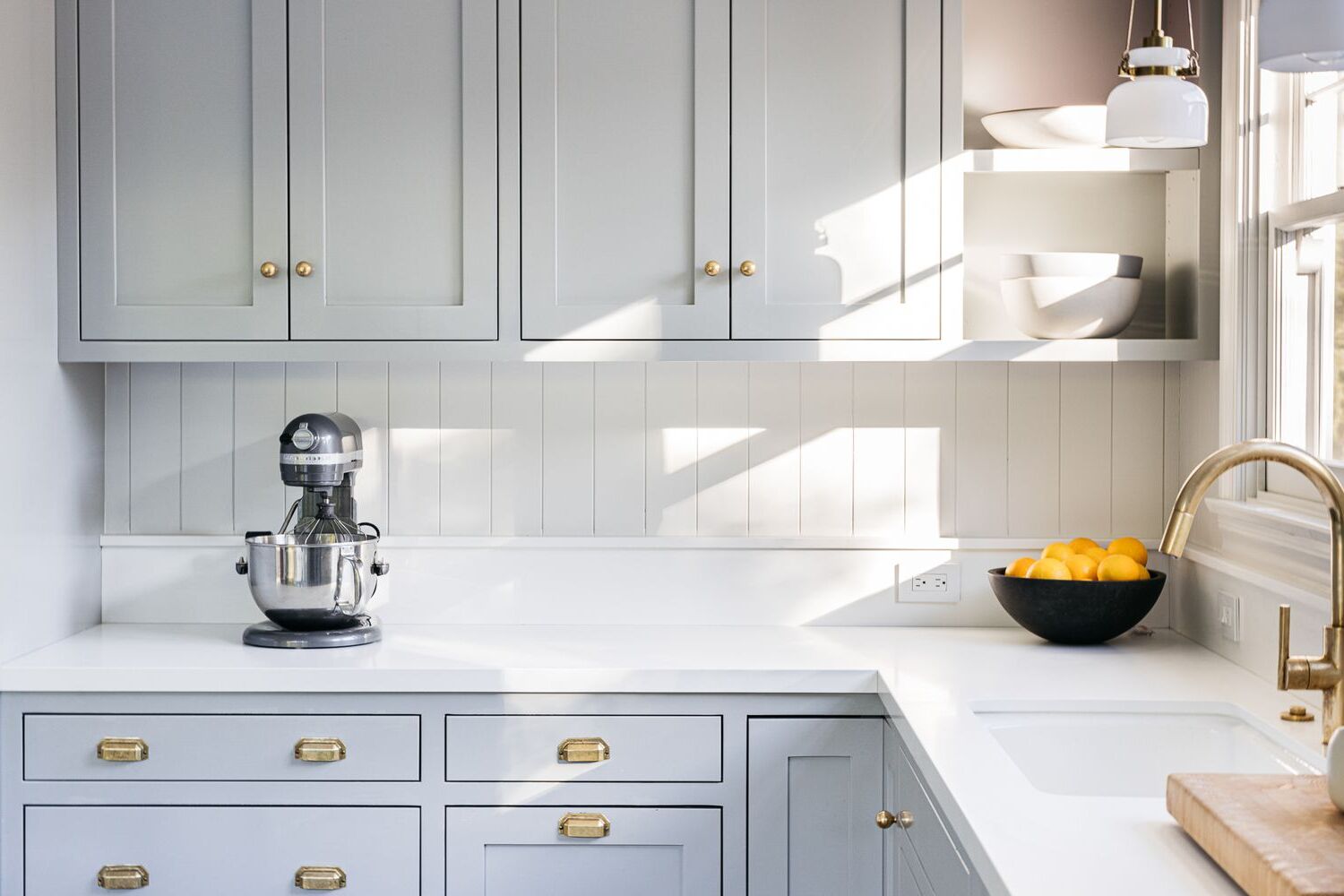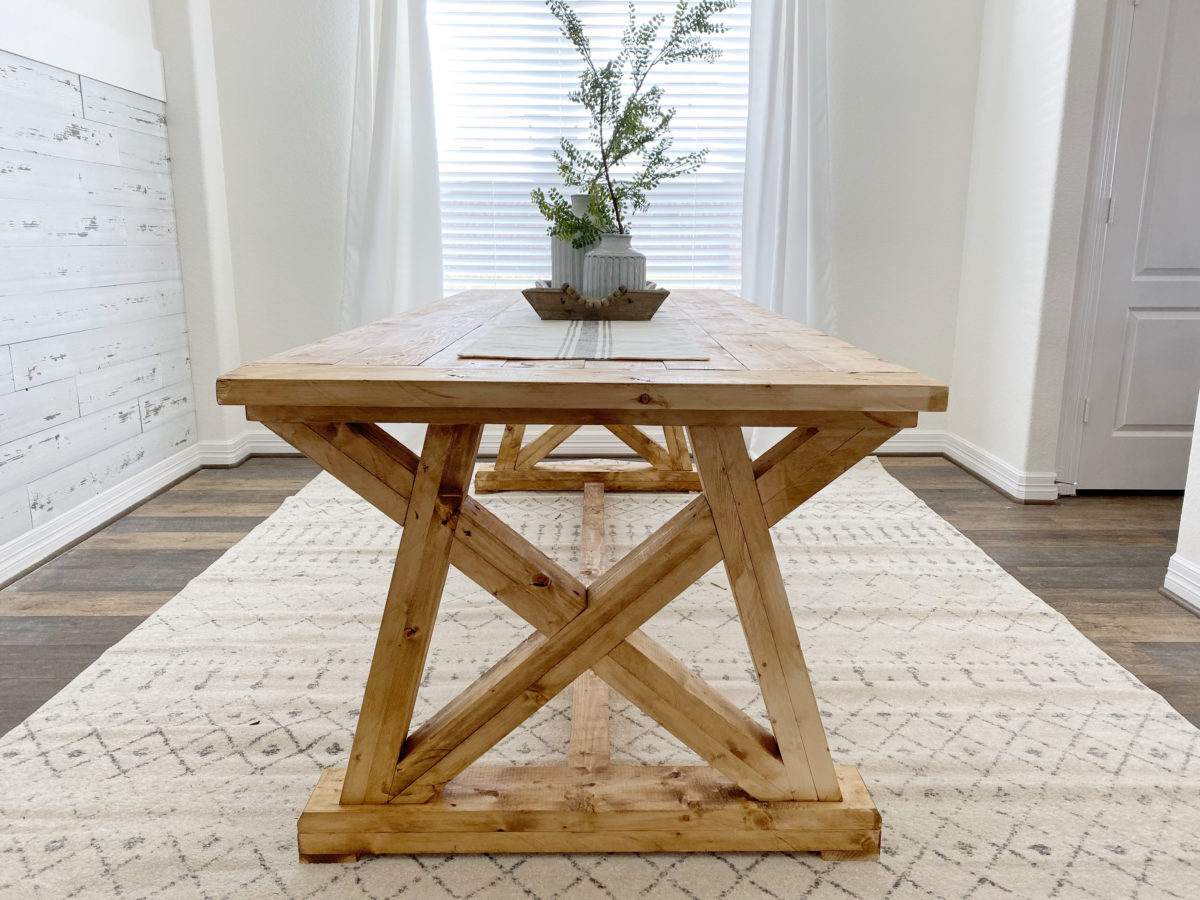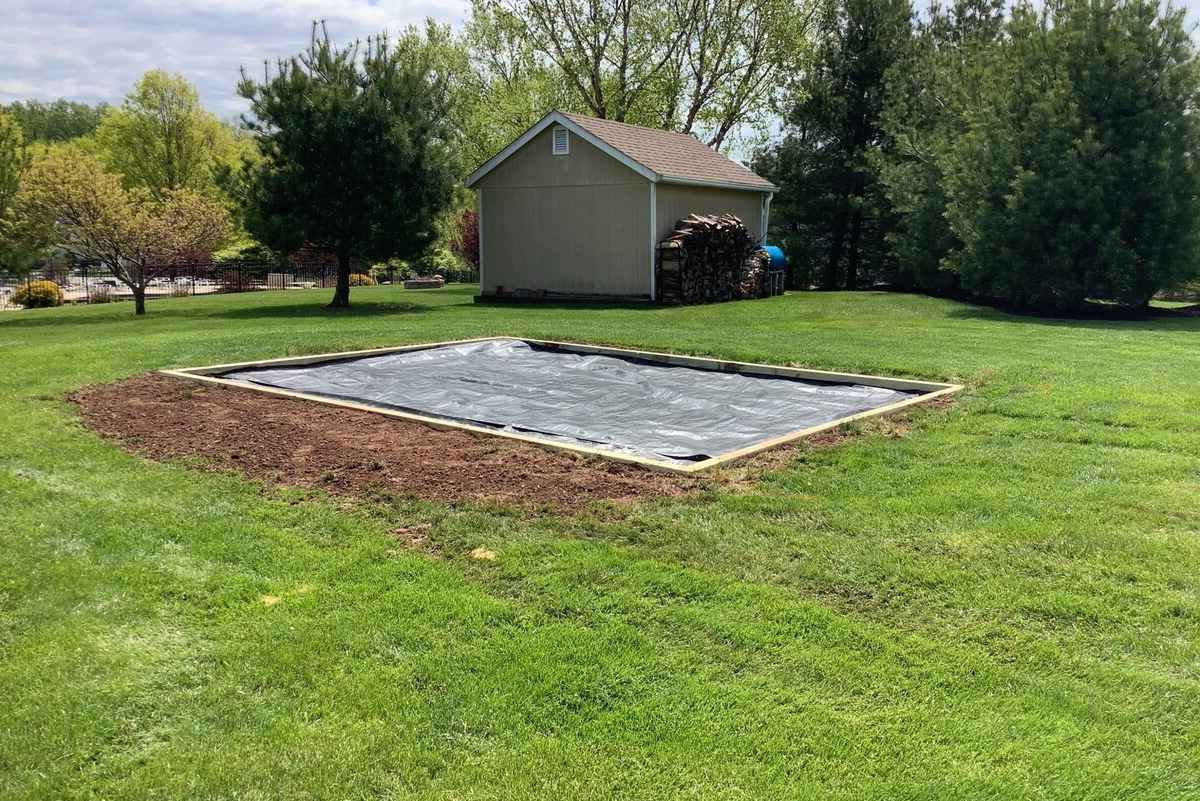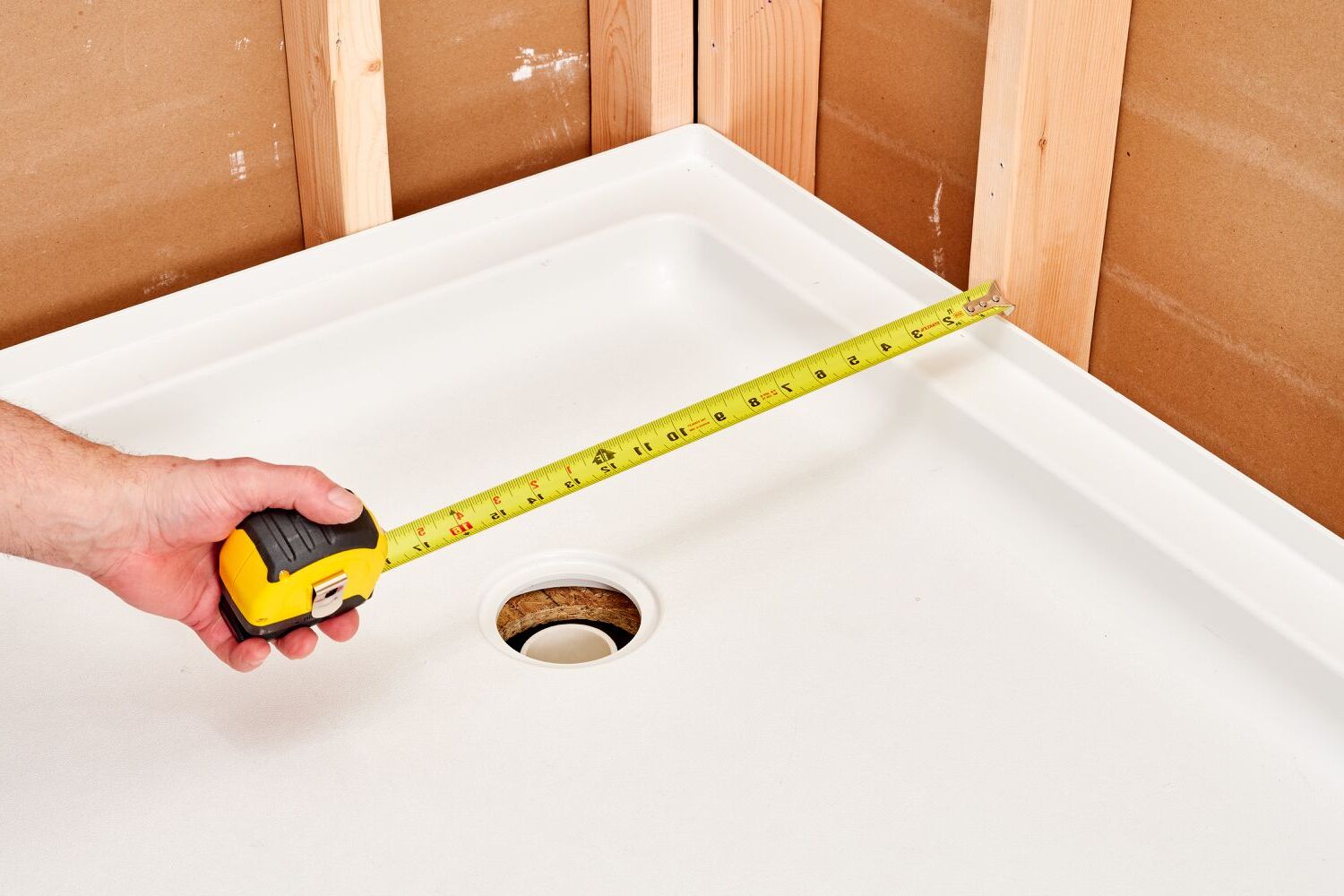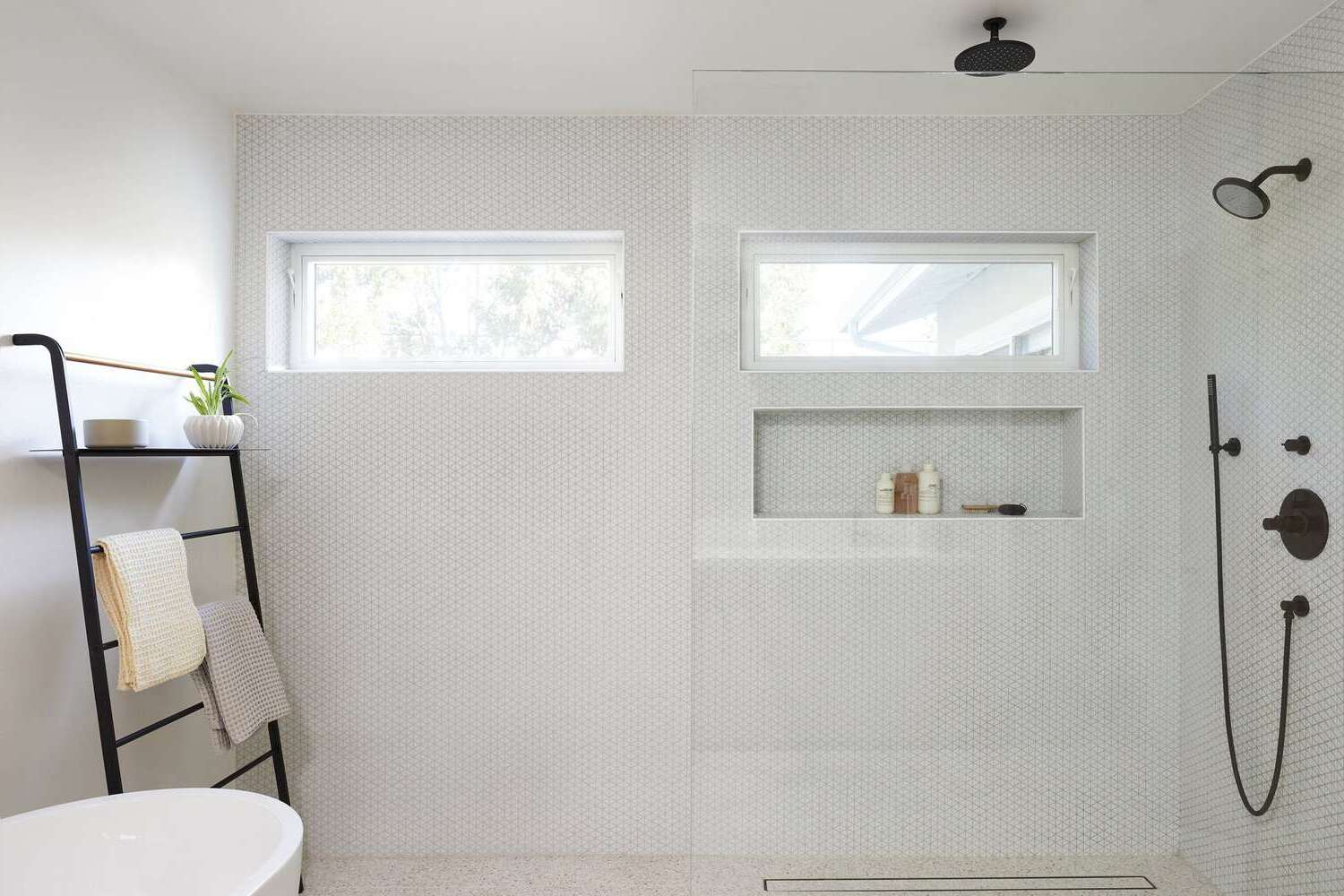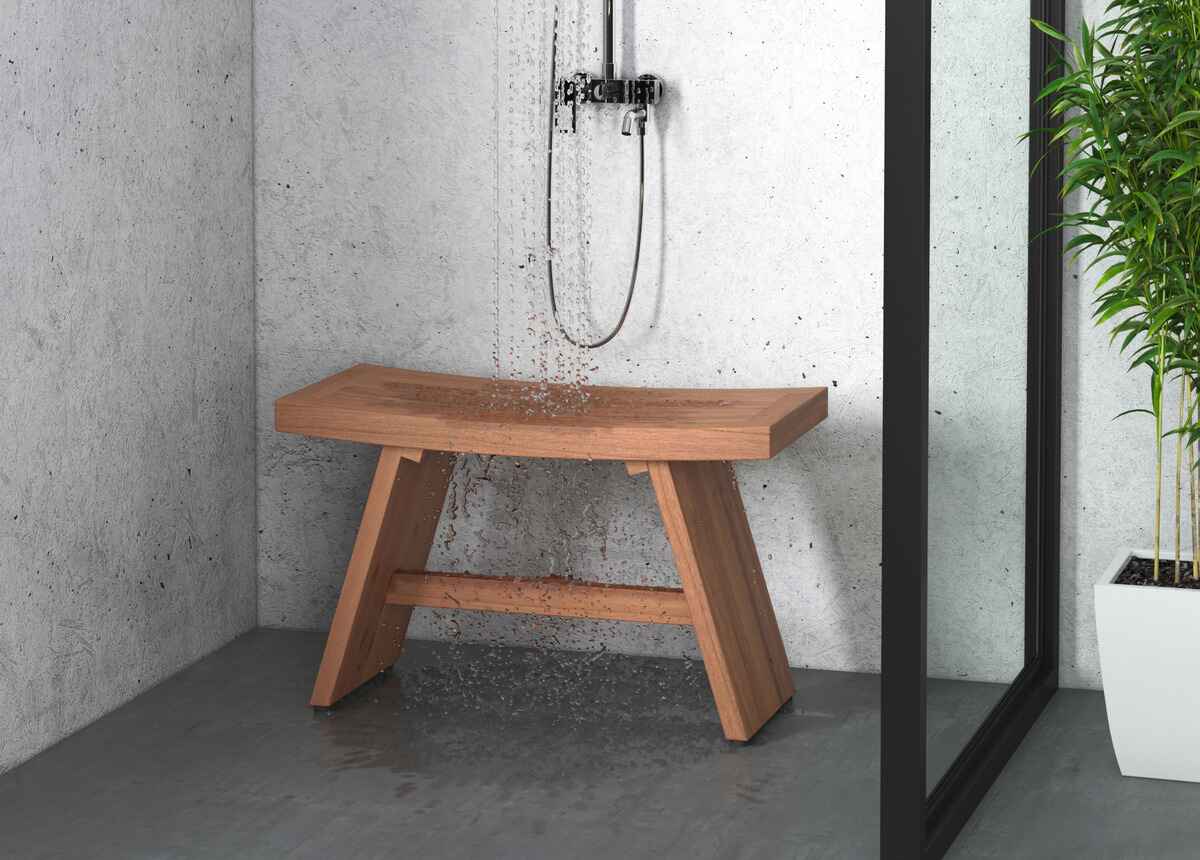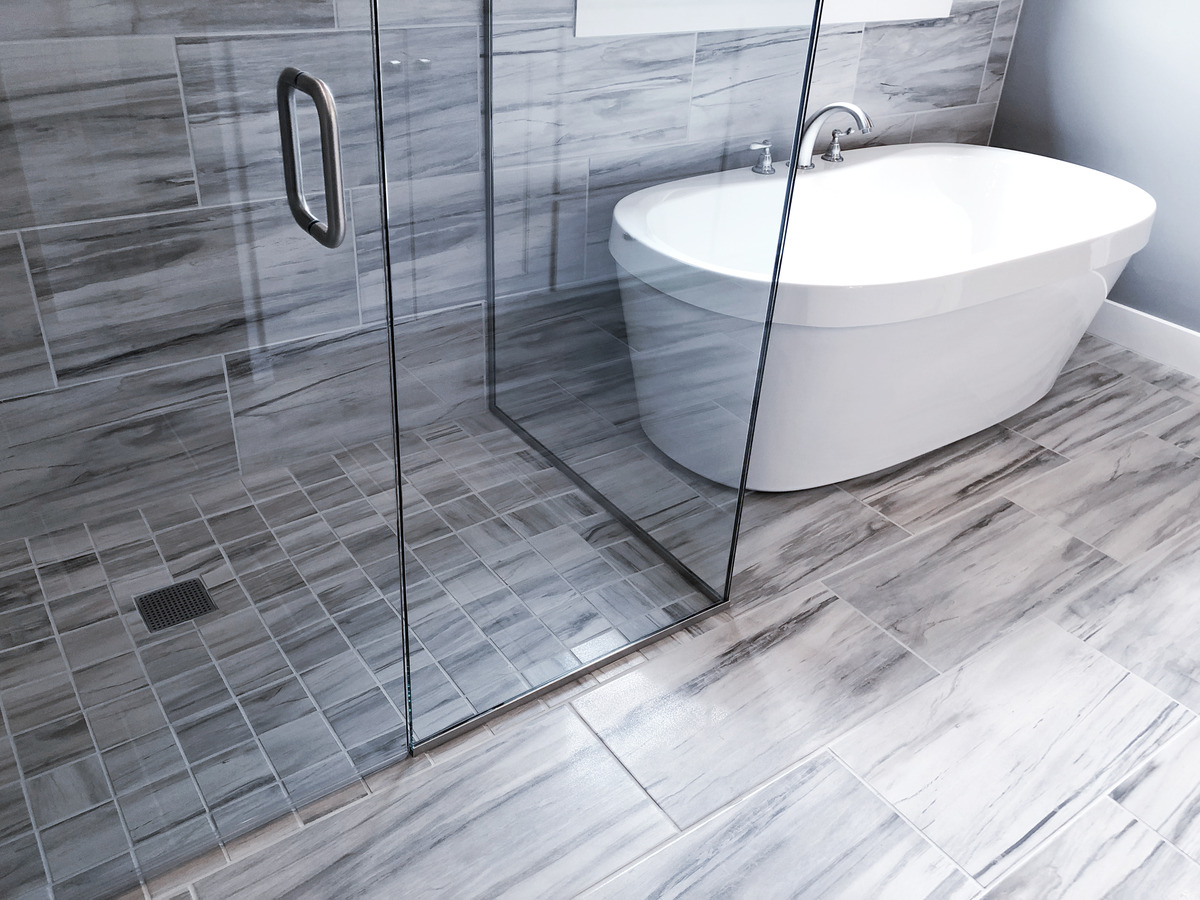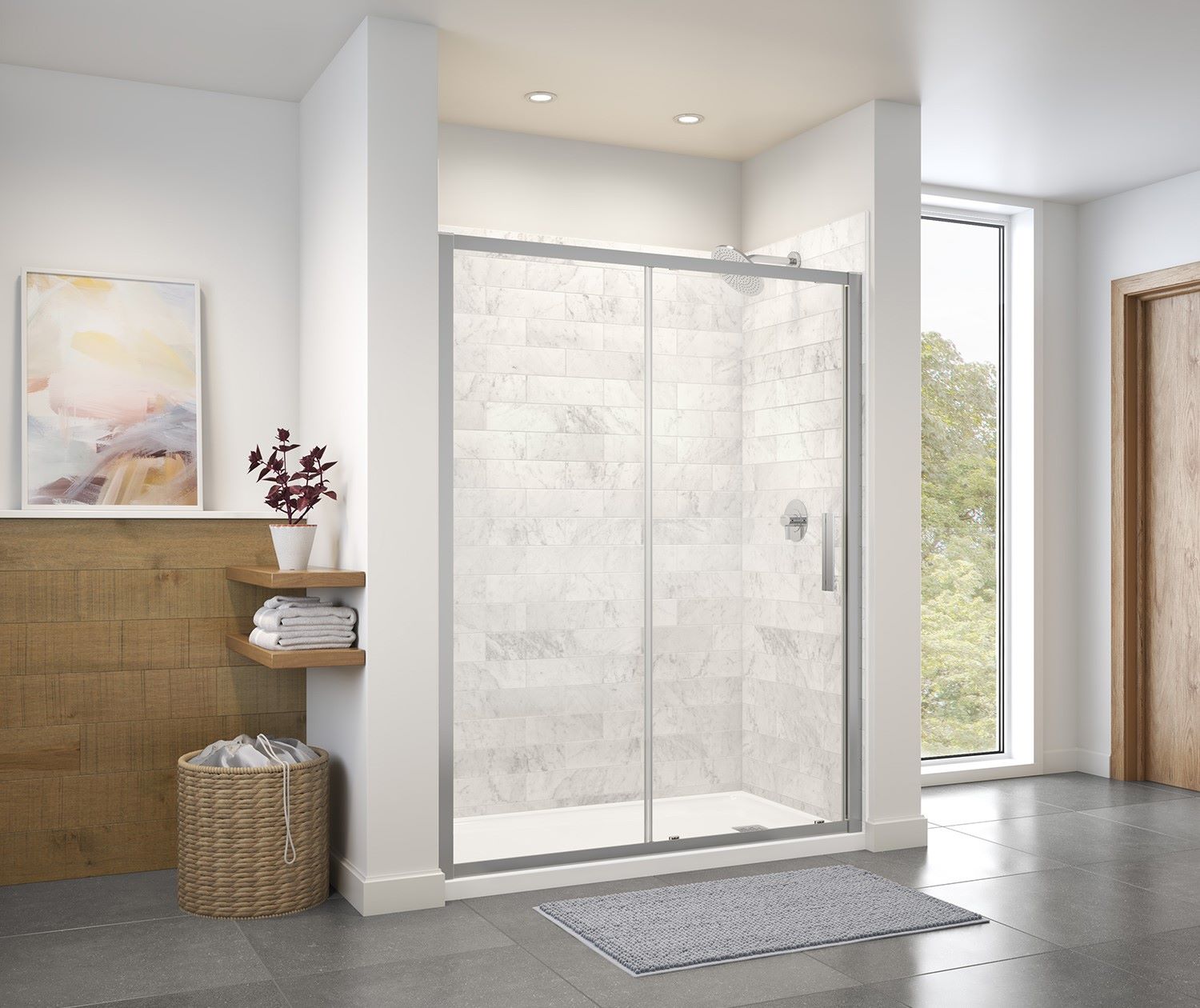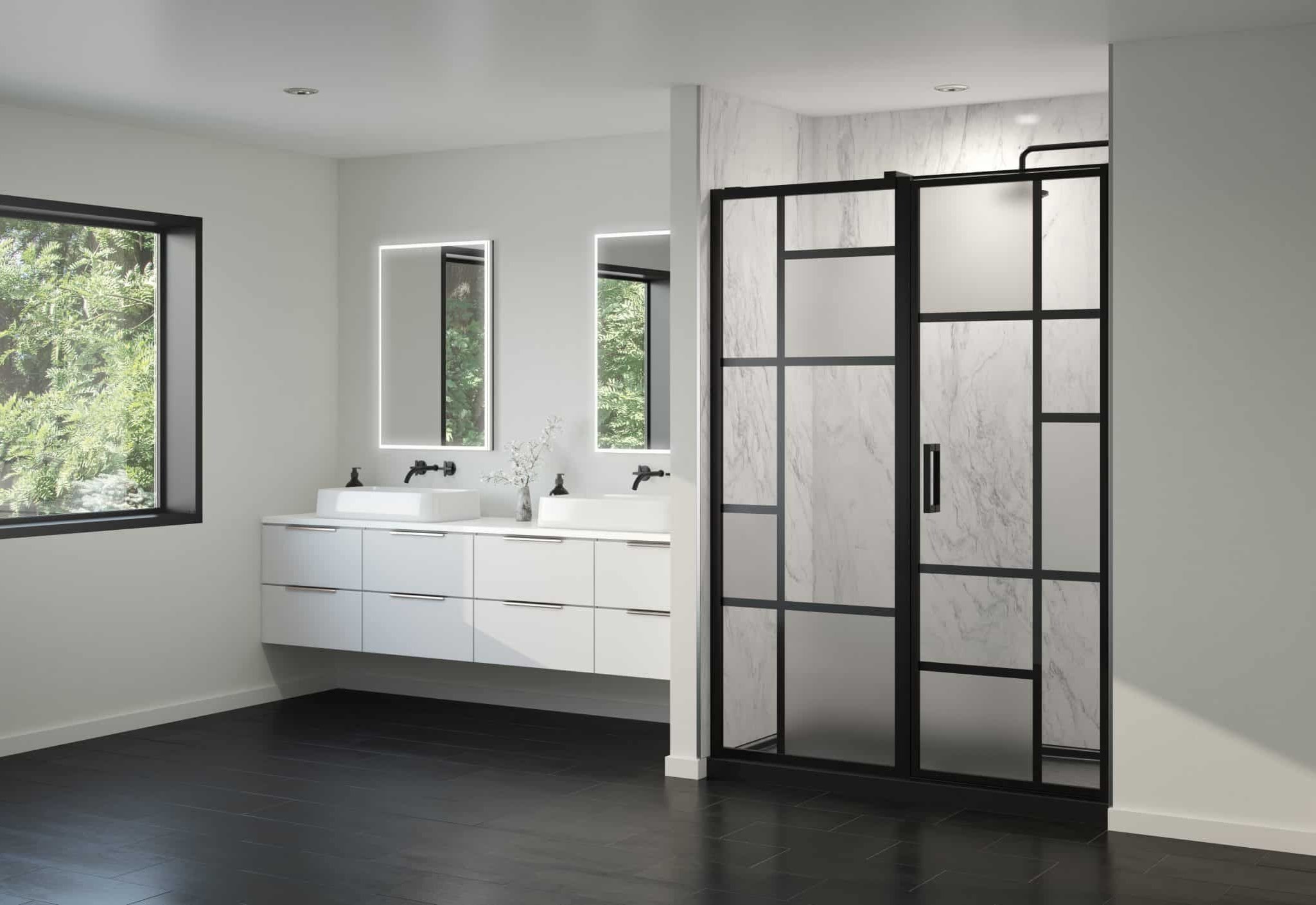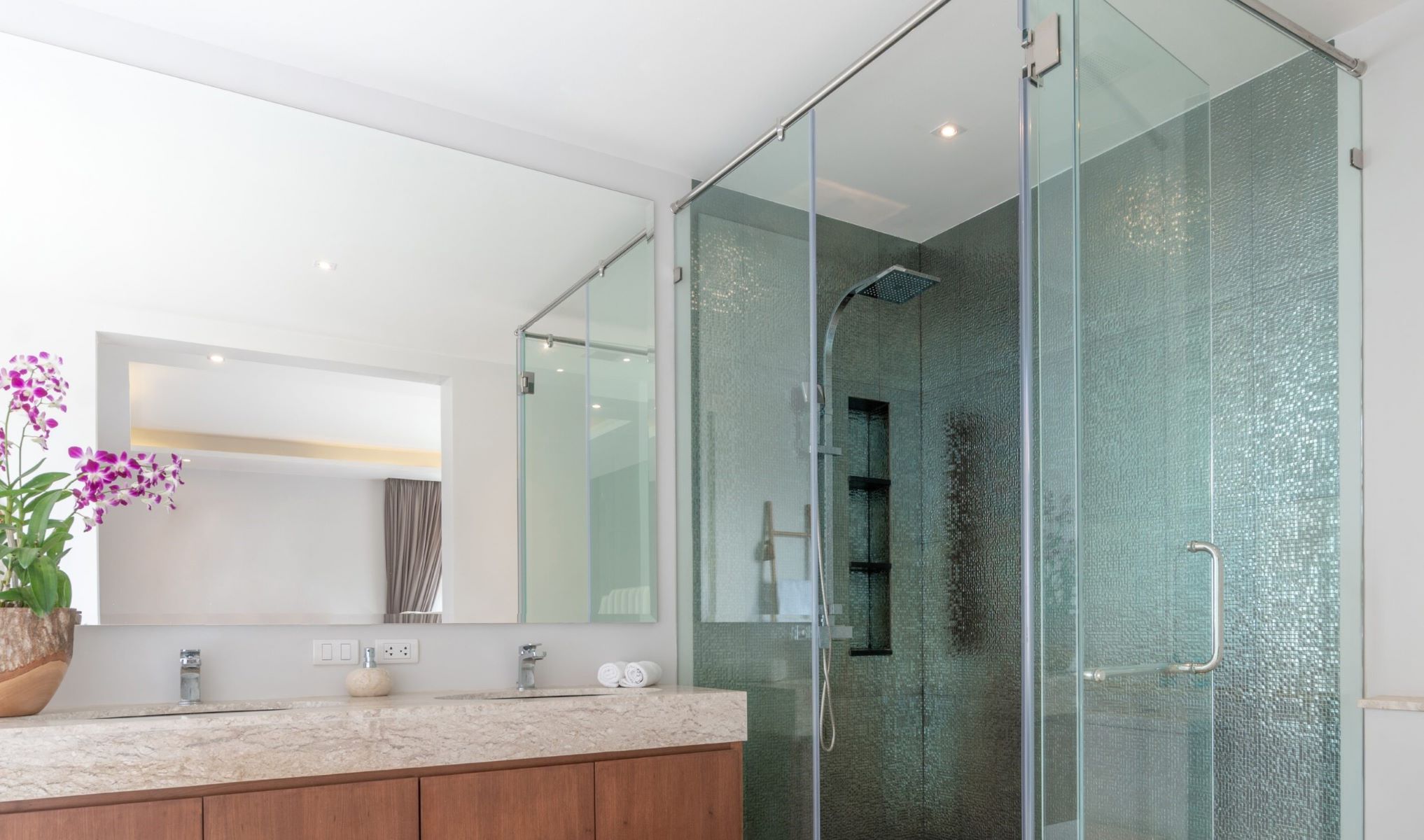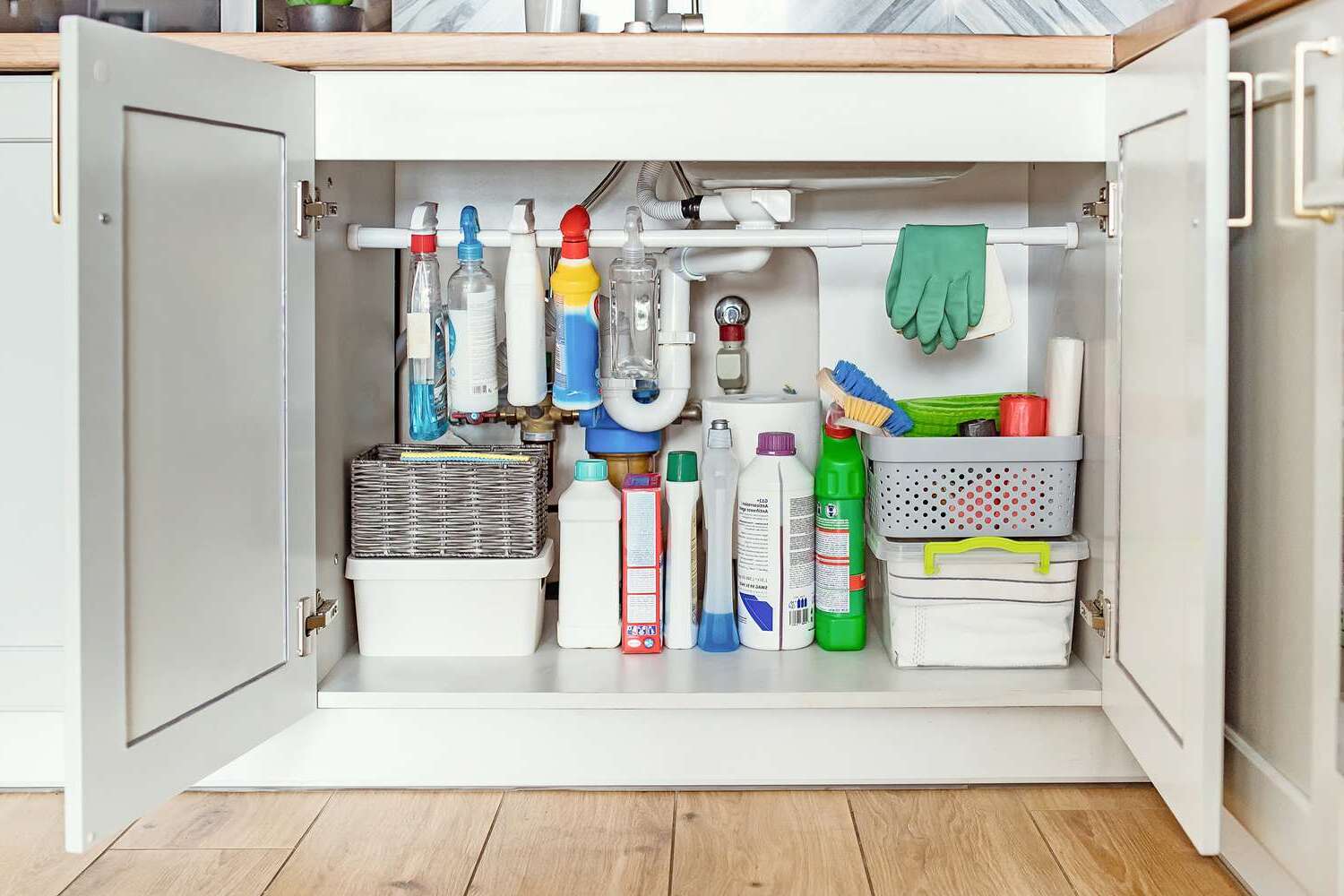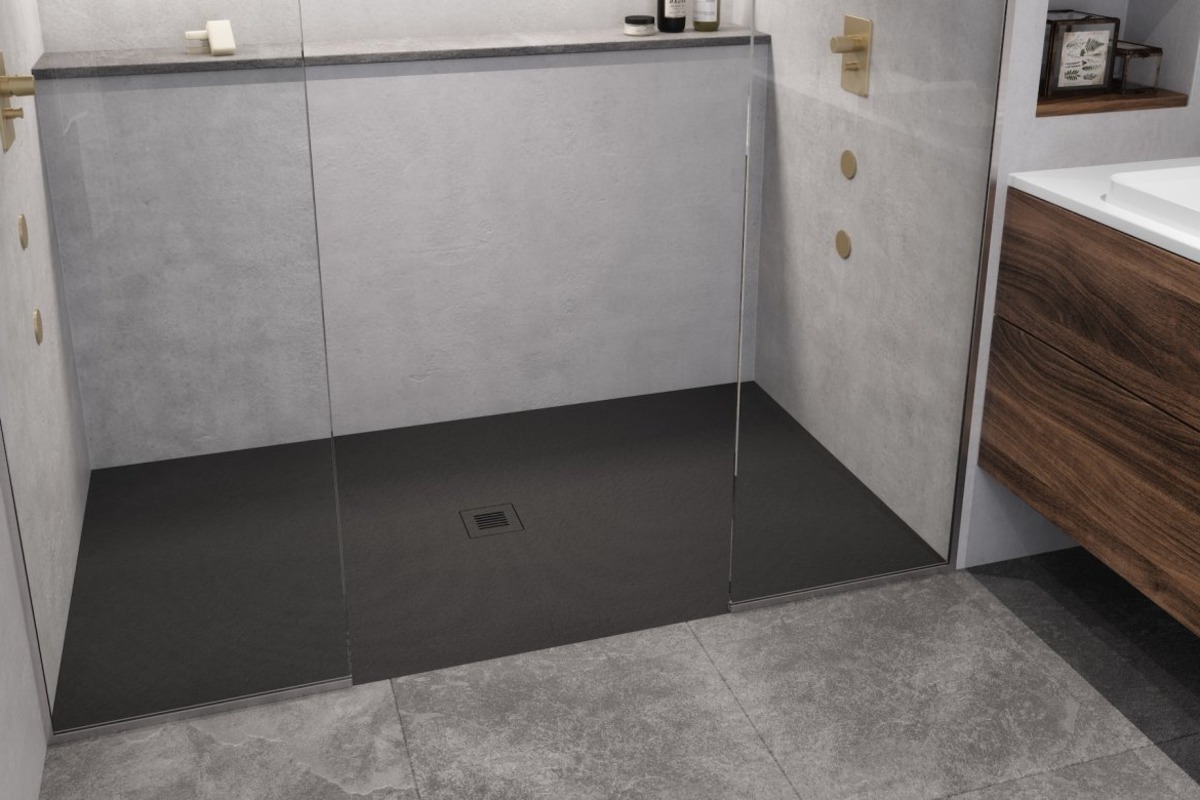Home>Home & Furniture>Bathroom>How To Build A Shower Base For Walk In Shower
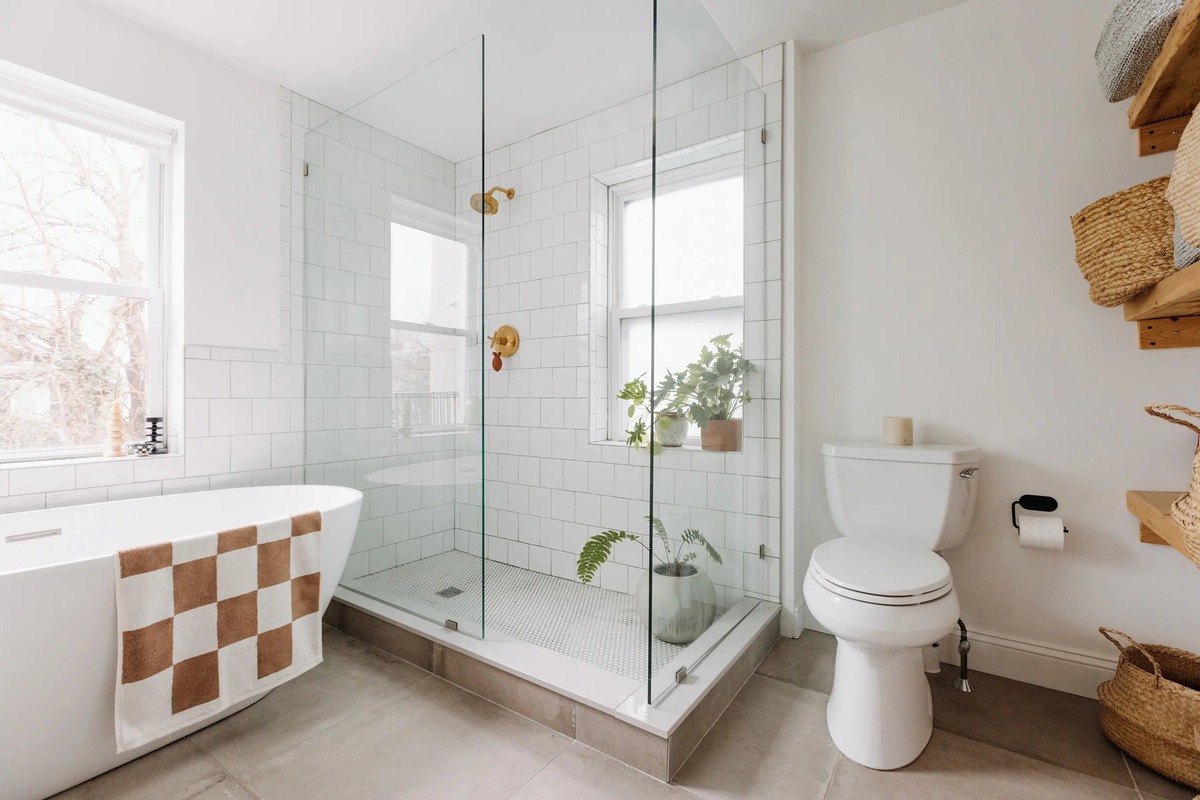

Bathroom
How To Build A Shower Base For Walk In Shower
Published: March 7, 2024
Editor-in-Chief with a decade in home renovation and a passion for vintage furniture. Diane is known for her weekend treasure hunts at flea markets, enriching our content with unique style insights.
Learn how to build a custom shower base for your walk-in shower in your bathroom. Step-by-step guide for a perfect bathroom renovation.
(Many of the links in this article redirect to a specific reviewed product. Your purchase of these products through affiliate links helps to generate commission for Twigandthistle.com, at no extra cost. Learn more)
Introduction
So, you've decided to take on the challenge of building a shower base for a walk-in shower. Congratulations! This DIY project can be a rewarding and cost-effective way to customize your bathroom and add value to your home. But where do you start? How do you ensure that your shower base is not only functional but also durable and waterproof? In this guide, we'll walk you through the step-by-step process of building a shower base for a walk-in shower, from planning and preparation to pouring and finishing. Let's dive in and get you on your way to creating the shower of your dreams!
Read more: How to Build a DIY Garage Foundation
Planning and Preparation
Before you start building your shower base, it's crucial to take the time to plan and prepare. This stage sets the foundation for the entire project and can ultimately determine the success of your walk-in shower. Here's what you need to do:
-
Measure the Space: Begin by measuring the area where the shower will be installed. Consider the dimensions of the shower base, the location of the drain, and the overall layout of the bathroom. Accurate measurements will ensure that your shower base fits perfectly and functions as intended.
-
Select the Right Materials: Choose the materials for your shower base carefully. Common options include concrete, mortar, and foam shower pans. Each material has its own set of pros and cons, so it's essential to select one that aligns with your budget, skill level, and design preferences.
-
Gather Your Tools: Make a list of the tools and equipment you'll need for the project. This may include a level, trowel, tape measure, waterproofing membrane, and a mixing container. Having the right tools on hand will streamline the construction process and help you achieve professional results.
-
Check Local Building Codes: Before proceeding, familiarize yourself with the building codes and regulations in your area. Some regions have specific requirements for shower construction, such as minimum slope gradients and waterproofing standards. Adhering to these codes is essential for ensuring the safety and compliance of your walk-in shower.
-
Create a Detailed Plan: Sketch out a detailed plan for your shower base, including the location of the drain, the slope of the floor, and the dimensions of the curb. Having a clear plan will serve as a roadmap during the construction phase and minimize the risk of errors or rework.
By investing time in thorough planning and preparation, you'll set yourself up for a smoother and more successful shower base construction process. Once you've completed these initial steps, you'll be ready to move on to the next phase of building your walk-in shower.
Building the Shower Curb
The shower curb plays a crucial role in containing water within the shower area and preventing leaks onto the bathroom floor. Here's how to build a sturdy and watertight curb for your walk-in shower:
-
Gather Your Materials: Before you begin, gather the necessary materials, including 2×4 boards, cement board, screws, and waterproofing membrane. These materials will form the structure of the curb and provide a solid foundation for the shower base.
-
Measure and Cut the Boards: Using a tape measure and a saw, carefully measure and cut the 2×4 boards to the desired length for the shower curb. Typically, the curb height ranges from 4 to 6 inches, but you can customize it based on your preferences and the requirements of your shower design.
-
Assemble the Frame: Once the boards are cut, assemble them into a rectangular frame that matches the dimensions of your shower base. Use screws to secure the corners and ensure that the frame is sturdy and level.
-
Attach the Cement Board: Next, attach cement board to the exterior sides of the curb frame. This step reinforces the structure and provides a surface for applying the waterproofing membrane later in the process.
-
Waterproof the Curb: Apply a waterproofing membrane to the entire surface of the curb, including the top and sides. This membrane acts as a barrier against moisture and helps prevent water from seeping into the curb and causing damage over time.
-
Integrate the Curb with the Shower Base: Position the completed curb in place within the shower area, ensuring that it aligns with the planned layout and slope of the shower base. Secure the curb to the subfloor using screws or adhesive, creating a seamless connection between the curb and the base.
By following these steps, you can construct a durable and well-sealed shower curb that forms an essential part of your walk-in shower. With the curb in place, you'll be ready to move on to the next stages of building your shower base and bringing your vision to life.
Installing the Drain
Installing the drain is a critical step in building a shower base for a walk-in shower. A properly installed drain ensures effective water drainage and prevents pooling, which can lead to leaks and water damage. Here's a detailed guide on how to install the drain for your shower base:
-
Locate the Drain: Begin by locating the position of the drain in the shower area. The drain should be strategically placed to allow for efficient water flow towards the center. Use a tape measure to determine the exact center of the shower base where the drain will be installed.
-
Prepare the Subfloor: Clear the area around the drain location and ensure that the subfloor is clean and free of debris. It's essential to create a level and stable surface for the drain assembly.
-
Install the Drain Flange: Place the drain flange into the designated position, ensuring that it fits securely and aligns with the surrounding surface. The flange should sit flush with the subfloor to form a tight seal.
-
Connect the Drain Pipe: Attach the drain pipe to the lower end of the drain flange, ensuring a snug and watertight connection. The drain pipe should extend downward and connect to the plumbing system below the subfloor.
-
Test for Leaks: Once the drain is installed, perform a preliminary leak test by pouring water into the shower base and observing the drainage. Check for any signs of leakage around the drain assembly and make adjustments as needed to achieve a secure and watertight seal.
-
Apply Waterproofing Membrane: After confirming that the drain is leak-free, apply a waterproofing membrane around the drain assembly and the surrounding area. This membrane acts as an additional barrier against water penetration and enhances the overall waterproofing of the shower base.
By following these steps, you can effectively install the drain for your walk-in shower base, ensuring proper water drainage and minimizing the risk of water-related issues. With the drain in place, you'll be one step closer to completing the construction of your custom walk-in shower.
Creating the Slope for Proper Drainage
Creating a proper slope in the shower base is essential for ensuring effective drainage and preventing water from pooling. Without the correct slope, water may accumulate, leading to potential leaks and water damage. Here's a detailed guide on how to create the necessary slope for proper drainage in your walk-in shower base:
-
Prepare the Subfloor: Before creating the slope, ensure that the subfloor is clean, level, and free of any debris. A smooth and even subfloor provides a solid foundation for building the slope.
-
Mark the Slope Lines: Using a pencil or chalk line, mark the slope lines on the subfloor. The slope should angle towards the drain, allowing water to flow efficiently and prevent standing water in the shower.
-
Install the Slope Formers: Place slope formers along the marked lines to define the slope's shape and angle. Slope formers, typically made of foam or rigid board, help create a consistent gradient from the outer edges towards the drain.
-
Mix and Apply the Mortar: Prepare a mortar mix according to the manufacturer's instructions. Spread the mortar evenly within the marked slope lines, building up the thickness gradually to achieve the desired slope. Use a trowel to shape and smooth the mortar as needed.
-
Check for Consistency: Use a level to ensure that the slope is uniform and consistent across the entire shower base. Adjust the mortar as necessary to maintain a smooth and even gradient towards the drain.
-
Allow the Mortar to Cure: Once the slope is formed, allow the mortar to cure and set according to the recommended drying time. This ensures that the slope maintains its shape and stability before proceeding to the next steps of the construction process.
By following these steps, you can create a well-defined slope in your shower base, promoting proper drainage and minimizing the risk of water accumulation. A carefully constructed slope is a fundamental element of a functional and long-lasting walk-in shower, providing both practicality and peace of mind for years to come.
Read more: How To Build A Shower
Waterproofing the Shower Base
Proper waterproofing is a crucial step in ensuring the longevity and durability of your walk-in shower base. Without effective waterproofing, the risk of water damage, mold growth, and structural issues increases significantly. Here's a detailed guide on how to waterproof the shower base to create a watertight enclosure:
-
Prepare the Surface: Before applying any waterproofing materials, it's essential to prepare the surface of the shower base. Ensure that the substrate is clean, dry, and free of any dust or debris. Any imperfections or cracks should be addressed and repaired to create a smooth and even surface for the waterproofing membrane.
-
Select the Waterproofing Membrane: Choose a high-quality waterproofing membrane that is specifically designed for use in wet areas such as showers. Options include sheet membranes, liquid-applied membranes, and waterproofing fabric. Consider the specific requirements of your shower base and select a membrane that offers excellent adhesion and long-term protection.
-
Apply the Waterproofing Membrane: Follow the manufacturer's instructions for applying the chosen waterproofing membrane. Use a paintbrush, roller, or trowel to evenly coat the entire surface of the shower base, including the walls, floor, and curb. Pay close attention to seams, corners, and areas around the drain to ensure comprehensive coverage.
-
Seal Joints and Corners: Focus on sealing joints, corners, and changes in plane to prevent water infiltration in vulnerable areas. Use waterproofing fabric or reinforcing tape to reinforce these critical junctures and create a seamless barrier against moisture penetration.
-
Check for Consistency and Coverage: After applying the waterproofing membrane, inspect the entire shower base to ensure consistent coverage and a uniform application. Address any areas that may require additional coating or touch-ups to guarantee comprehensive waterproofing.
-
Allow for Proper Drying Time: Once the waterproofing membrane is applied, allow sufficient time for it to dry and cure according to the manufacturer's recommendations. Adequate drying time is essential for the membrane to form a strong, impermeable barrier that effectively protects the shower base.
By following these steps, you can effectively waterproof the shower base for your walk-in shower, creating a secure and watertight enclosure that safeguards against water damage and ensures the long-term integrity of your bathroom. Proper waterproofing is a critical investment in the longevity and performance of your shower base, providing peace of mind and protection for years to come.
Pouring and Finishing the Shower Base
After completing the essential preparatory steps, such as building the shower curb, installing the drain, creating the slope for proper drainage, and waterproofing the shower base, you are ready for the pivotal stage of pouring and finishing the shower base. This phase involves the application of the concrete or mortar mixture to form the actual base of the walk-in shower. Here's a detailed guide on how to pour and finish the shower base to achieve a professional and durable result:
-
Prepare the Concrete or Mortar Mixture: Depending on the chosen material for the shower base, whether it's concrete or mortar, carefully prepare the mixture according to the manufacturer's instructions. Ensure that the consistency is suitable for pouring and shaping, allowing for optimal workability and strength once set.
-
Pour the Mixture into the Shower Area: With the prepared mixture at the right consistency, carefully pour it into the designated shower area, covering the entire surface within the marked boundaries. Use a trowel to distribute the mixture evenly and achieve a uniform layer across the shower base.
-
Smooth and Shape the Surface: Once the mixture is poured, use a trowel to smooth and shape the surface of the shower base. Pay attention to creating a gentle slope towards the drain to facilitate proper water drainage. Ensure that the surface is level and free of any irregularities that could affect the functionality and aesthetics of the shower base.
-
Create a Neat and Defined Edge: As you work on shaping the shower base, pay special attention to creating a neat and defined edge along the perimeter. This edge will contribute to the overall appearance of the shower base and provide a seamless transition to the surrounding floor or tiles.
-
Allow for Proper Curing Time: After pouring and shaping the shower base, allow the concrete or mortar mixture to cure and set according to the recommended drying time. Adequate curing time is essential for the material to achieve its full strength and stability, ensuring a long-lasting and resilient shower base.
-
Apply a Protective Sealant (Optional): For added protection and longevity, consider applying a protective sealant to the cured shower base. A high-quality sealant can enhance the waterproofing and durability of the base, providing an extra layer of defense against moisture and wear.
By following these steps, you can effectively pour and finish the shower base for your walk-in shower, creating a solid and well-crafted foundation for the entire shower enclosure. The pouring and finishing phase is a critical aspect of the construction process, and attention to detail during this stage will contribute to the overall functionality and aesthetic appeal of your custom walk-in shower.
Conclusion
In conclusion, building a shower base for a walk-in shower is a rewarding DIY project that allows you to customize your bathroom and create a functional, stylish, and durable shower enclosure. By following the step-by-step process outlined in this guide, from planning and preparation to pouring and finishing, you can achieve professional results and enjoy a custom walk-in shower tailored to your preferences. Remember to prioritize thorough planning, precise measurements, and adherence to building codes to ensure the safety and compliance of your shower base. With the right materials, tools, and attention to detail, you can create a shower base that not only meets your practical needs but also enhances the overall aesthetic and value of your home. Embrace the opportunity to unleash your creativity and craftsmanship, and soon you'll be stepping into the shower of your dreams.

